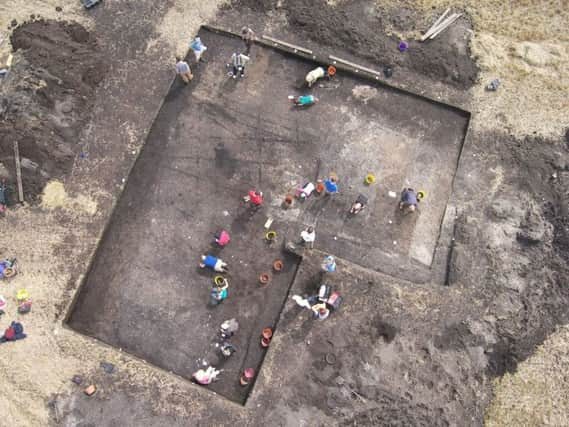Two more stone-age houses dug up near Scarborough


An archeological team examining the Star Carr site say they have found evidence of at least two more houses, which have been dated using radiocarbon techniques to around 8,900 BC.
The discoveries, which are documented in a new book about the site, indicate that it was inhabited several centuries earlier than previously thought.
Advertisement
Hide AdAdvertisement
Hide AdThe news follows the revelation that a 10,000 year-old crayon had been found beneath the earth there. The 22cm implement, ochre in colour, is thought to have been used to draw on animal skins.
Researchers have also been able to document evidence of rituals, feasting, jewellery making, communal building activities and tool manufacture.
The book, funded by Historic England, is being made available as a free online version, with video and 3D images, as well as in traditional formats.
Its co-author, Prof Nicky Milner, from the University of York, described the site as “incredibly rare” and said it had attracted interest from around the world.
Advertisement
Hide AdAdvertisement
Hide Ad“We are thrilled to finally share our remarkable discoveries preserved in layers of peat,” she said.
“The digital version in particular really brings the findings to life through photos and video, and allows us to share the scientific techniques employed to interpret and reconstruct the lives of these ancient people.”
The settlers at Star Carr would have been among the first to return to Britain after the glaciers of the Ice Age had retreated, Prof Milner said.
The book confirms that the site was occupied over an 800 year period, and included large timber platforms along the shores of the vast lake that once covered part of the area.
Advertisement
Hide AdAdvertisement
Hide AdThe carpentry work uncovered is so substantial that the authors believe they may have been the result of communal building activities, in which several groups united for building and seasonal celebrations.
Co-author Dr Chantal Conneller, from Newcastle University, said: “The book pulls together all the new evidence from Star Carr into a single source. It changes our perception of the complex and culturally sophisticated lives of these hunter gatherers.
“Though these groups moved into an empty landscape, this place quickly became their home as well as representing an important ritual focus.”
Star Carr, considered one of the most significant stone-age sites in Europe was discovered in the late 1940s but the most recent excavations, using techniques not available to post-war researchers, took place from 2003- 2015.
Advertisement
Hide AdAdvertisement
Hide AdArtefacts of cultural significance to have been unearthed there include shale beads, antler headdresses, one of Britain’s earliest dogs and the remains of at least two butchered red deer that had been arranged to create the form of a single animal.
The new book, published in two volumes, is the first from White Rose University Press, an academic imprint supported by York, Leeds and Sheffield Universities.